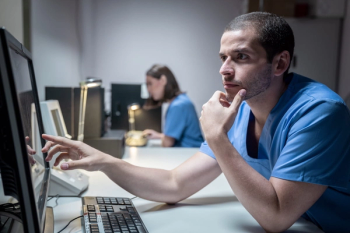
AI Software for Fracture Detection Gets FDA Clearance
A recent multicenter study of BoneView AI noted a significant increase in sensitivity for fracture detection on X-rays and decreases in reading time for radiographs.
An emerging artificial intelligence (AI) software that reportedly reduces false negative rates for fractures by 29 percent has received
BoneView® AI (Gleamer) detects fractures on X-rays, highlights regions of interest and submits them to radiologists for confirmation, according to the French company Gleamer. The company said the algorithm was designed to aid a variety of physicians who read X-rays in clinical practice.
Noting that traumatic injuries account for one-third of visits to emergency rooms (ERs), Gleamer noted that errors with fracture interpretation, which are common during evening hours, can represent up to 24 percent of harmful diagnostic errors in the ER. The company said these errors may result from fatigue and non-expert reading of X-rays.
Howcver, a
“The assistance of AI should allow us to improve the specificity of the complementary exams prescribed after the radiography, to avoid delays in care, and to direct patients into the right therapeutic pathway,” noted Dr. Guermazi, the chief of radiology with the Veterans Affairs Boston Healthcare System and a professor of radiology and medicine at the Boston University School of Medicine.
In the study, Guermazi and colleagues emphasized the potential of AI in establishing triage priorities at busy medical centers.
“If the AI can detect a fracture prior to radiologists’ interpretation, then that particular study can become prioritized on the work list,” wrote Guermazi and colleagues. “If radiologists can prioritize reading studies with a potentially positive finding, then delay between initial nonexpert reading and the radiologists’ final report can be minimized, thereby improving the patient care.”
Newsletter
Stay at the forefront of radiology with the Diagnostic Imaging newsletter, delivering the latest news, clinical insights, and imaging advancements for today’s radiologists.




























